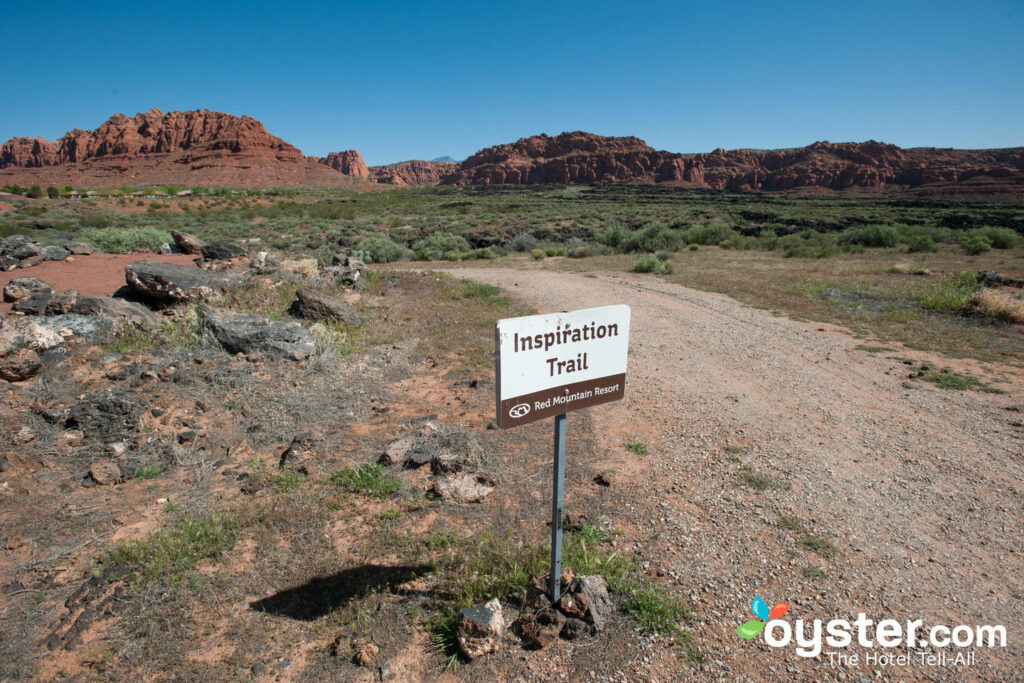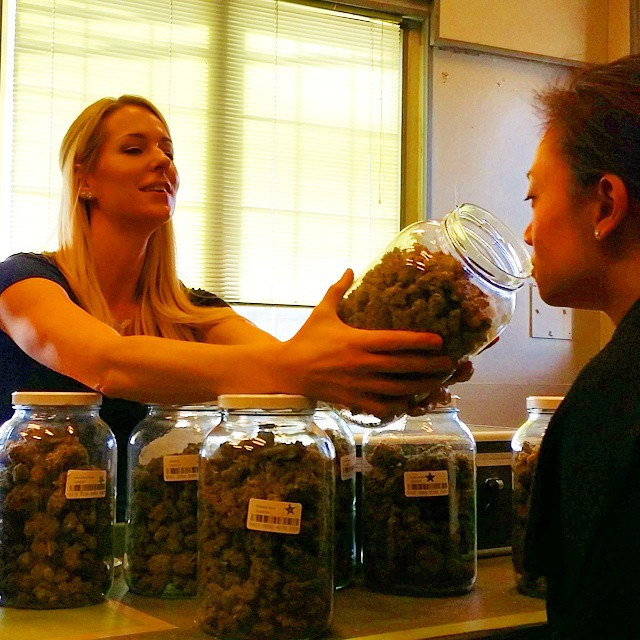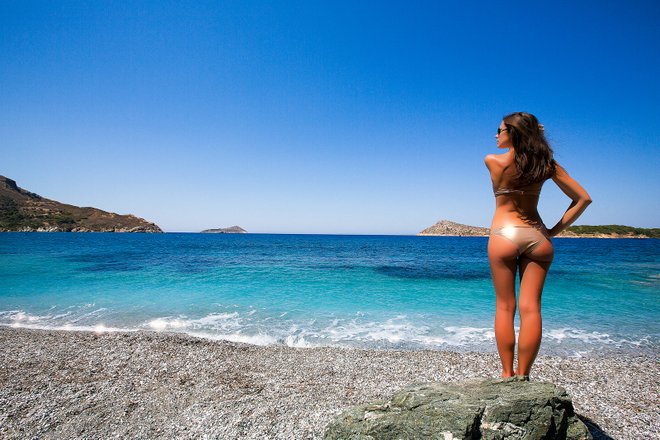It seems business or pleasure are the only options travelers are given when defining the reasoning behind their trips, but motivations for travel aren't always so crystal-clear. In fact, more and more travelers are going on pilgrimages, to very specific destinations, for reasons that don’t fall anywhere near the classic brackets of leisure or work-related. Here are five of the most fascinating underground forms of tourism out there.
1. Food Tourism
Pop quiz time! Have you obsessively documented a trip by dutifully ‘gramming every beautifully presented quince tart tatin, honey-drizzled fried chicken platter, or salty-egg-topped papaya salad you’ve encountered? Have you ever decided where to vacation based, at least partially, on the area’s local cuisine, or eateries and nightlife? Then you might just be part of the growing sector of travelers known as “food tourists.” When deciding where to go for their next trip, travelers are increasingly factoring in a potential destination’s food and drink scene — whether it’s the local restaurants, food trucks, and bars or the nearby farms and markets, food artisans, vineyards, and breweries. Hard-core food and vino lovers are often more interested in exploring a city or region’s gastronomic offerings than they are in the area’s natural or non-food-based cultural attractions. Travelers on food sabbaticals might be set on sampling Sazeracs and muffelatas in New Orleans, going on a mission to find the best Key lime pie in Southern Florida, or navigating backwoods highways in Quebec to come across a classic Canadian roadside sugar shack.
The Ontario Culinary Tourism Alliance (OCTA) defines food tourism as “any tourism experience in which one learns about, appreciates, and/or consumes food and drink that reflects the local, regional or national cuisine, heritage and culture.” According to a 2015 report published by OCTA and Skift, a travel news site, “In 2012, it was estimated that tourism expenditures on food services in the U.S. topped $201 billion, nearly a quarter of all travel income.” Because, honestly, show us the traveler who doesn’t want to eat and drink their way through a vacation.
Hotel Pick: The many wining and dining options at this culinary-themed hotel include a restaurant, rooftop bar, patisserie, wine shop, and the Epicurean Theatre, a demo kitchen that hosts regular classes and tastings. Even the spa offers delectable food-themed treatments, like Cabernet body scrubs and milk facials.
2. Wellness Tourism

Yoga retreats, spa getaways, and other healing-focused trips may sound like a New Age fad, but humans have been going on health-driven vacations for millennia (think ancient Romans traveling to mineral baths or sun-starved Victorians flocking to Mediterranean climes on doctors’ orders). These days, wellness tourism is a nearly $500-billion-a-year industry, and it’s estimated to grow to $680 billion by 2017. “Wellness
travel is one of the fastest growing — if not the fastest growing — tourism
categories today,” says Beth McGroarty, research director at the
Global Wellness Institute. GWI defines wellness tourism as “all travel
associated with the pursuit of maintaining or enhancing one’s personal
well-being, whether physical, mental,
environmental, or spiritual,” a definition that McGroarty says is “willfully broad, because it spans many kinds of travel: destination spas, health and wellness resorts, fitness- or
adventure-focused travel (like hiking, water sports, and cycling), hot springs, and wellness cruises. Even mainstream hotels — almost all the big brands from Westin to the Four Seasons — are adding more health and fitness programming.”
Tracey Welch, general manager at Red Mountain Resort, says that most of the luxury retreat’s guests are in search of “healthy stress reduction, through reconnecting with nature and increased physical activity.” Many of Red Mountain’s guests want to immerse themselves in the stunning American Southwest surroundings, so the resort offers hiking and biking treks through Zion and Bryce Canyon National Parks. On the more extreme end of the fitness spectrum is The Ashram, a Calabasas wellness resort with pre-dawn wake-up calls and required 10- to 15-mile morning hikes. It’s not “ten-hut!” all the time: guests get a daily massage before diving into an afternoon agenda of pool, weight, and barre classes. Meals are totally organic, gluten-free, and vegetarian (and alcohol-less!), with many ingredients coming from the Ashram’s own garden. Definitely not a cushy, mai-tai-by-the-pool experience — but there’s a six-month waiting list. “Most of our guests come here to stop the clock and reset their body, mind, and soul,” says director Catharina Hedburg. While these well-being-centric resorts are certainly in line with the healthy-living movement, McGroarty is positive that “wellness
tourism is far more than a passing trend. In the coming years, the concept will increasingly
reshape tourism — and how people perceive what they want to get out of travel — as we’ve known it.”
Hotel Pick: Nestled amid southern Utah’s red rock cliffs, this all-inclusive adventure and wellness destination features a full-service spa, hammocks, fire pits, pools, and hot tubs to help guests unwind.
3. Marijuana Tourism
Cannabis vacay, anyone? (All in favor, say “high!” Sorry, couldn’t resist.) In recent years, Colorado, Oregon, Washington, and Alaska have legalized recreational marijuana, and, as a result, these states are seeing a, um, blaze of pot tourism. Grass fanatics from all over the country are heading West to visit marijuana dispensaries and other cannabusinesses, go on canna “bus” tours to see local grow operations and other 420 facilities, take edibles cooking classes, and even stay in “bud and breakfasts” (oh, the pot bon mots!), which are weed-friendly inns and hotels that allow smoking on the premises. Those looking to combine wellness and marijuana tourism could consider Kush Tourism, a Seattle cannabis tour operator that offers a cannabis massage package (hey, Washington’s not called the Evergreen State for nothing). A warning, though, to hash-happy travelers: while recreational marijuana in these states is legal, the public consumption of it is not, of course. Here’s to your next — yes — trip.
Hotel Pick: Located in the heart of downtown, near theaters and music venues, this boutique hotel offers 37 hip, clean rooms with bright colors and fun artwork.
4. Plastic Surgery Tourism
Increasingly, people travel internationally in pursuit of plastic and cosmetic surgery. Why cross country lines for an elective medical procedure? The major reason is the price tag. “Brazil was the body contouring capital of the world, but it is not as cheap as it once was and it’s not always safe,” says Sam Rizk, MD, FACS, Director of Manhattan Facial Plastic Surgery. “Americans sometimes go to Thailand for cheap breast implants or Korea where cosmetic surgery is exploding. Some Europeans will go to North Africa and the Middle East — Lebanon, Morocco – where surgery is very discounted.” Plastic surgeon Anthony Youn, a contributor for RealSelf, a cosmetic surgery network, points out that another driving force for plastic surgery tourism — albeit a less common one — is bypassing government regulations on a particular procedure. “Before the silicone gel implant moratorium was lifted back in 2006, there were many, many American women who traveled overseas to get the procedure since it wasn’t available in the U.S. Now, we see this with certain injectables that aren’t FDA-approved, particularly permanent injectables.” Youn and Rizk both stress that traveling internationally for plastic surgery is an incredibly high-risk undertaking. “First of all, it is much more difficult to check out a doctor or clinic’s credentials online without having visited the facility or met the doctor in person and reviewed his expertise,” says Rizk. “Traveling abroad is not simple either. It takes planning, and there may not be much of a savings when you add in the costs of airfare, hotels, nursing, and so on. The dangers and risks far outweigh the potential savings and outcomes.” Youn asks, “Will your health insurance pay for a complication while you are in another country having elective cosmetic surgery? If you are thinking of having plastic surgery abroad, do your research. And, most important of all, make your decisions based on what is best for your health and wellness, not your pocketbook.”
Edwin F. Williams III, President of the American Academy of Facial Plastic and Reconstructive Surgery, mentions another motivation behind medical tourism: Since many of these procedures require significant down time, patients might want to recover in a warm climate. Williams has recently opened an aesthetic surgery clinic in St. Thomas, and says that the clinic “attracts patients for that very reason, as we have a relationship with the Ritz-Carlton. St. Thomas is a U.S. territory, so is in full compliance with the standard of care and anesthesia requirements that we have in the States. Over half of the patients that we see in our St. Thomas clinic have had surgery done poorly — basically “botched” — by an international economy clinic. The bottom line is we would strongly caution anyone from traveling to an international destination just to save money.”
Hotel pick: This classy resort’s location on a marine-life reserve makes it ideal for scuba diving and snorkeling.
5. Dental Tourism
A subset of medical tourism at large, dental tourism is the tendency for patients to seek dental work from practices around the world. Again, money is the main impetus behind dental tourism. “The higher cost of dentistry in the United States, especially cosmetic dentistry, has created lucrative opportunities for foreign dentists,” says New York-based dentist and RealSelf Top Doctor Gerry Curatola. “These dentists perform treatments such as porcelain laminate veneers, dental implants, crowns and bridgework, often at a much lower fee. Many U.S. patients are seemingly drawn by the perceived bargain and a vacation in the process!” The Rejuvenation Dentistry founder also notes that traveling to other countries is an especially alluring prospect for those who want to have their mercury fillings removed, since “most U.S. dentists usually won’t perform this service without the presence of decay. The problem is that removing a mercury filling involves an important protective protocol to avoid exposure to dangerous levels of mercury vapor.” Periodontist Nicholas Toscano says he also sees many patients who have gone overseas in the name of saving money. He urges patients to consider that “there may no recourse should something go wrong; it’s very hard to jump on a jet again to fly back to the country to have the doctor redo the work.”
Related Links:
- 14 Stunning Health and Wellness Retreats
- Get Restored at These 10 Incredible Hot Springs Hotels
- 6 European Dishes That Will Change Your Life
All products are independently selected by our writers and editors. If you buy something through our links, Oyster may earn an affiliate commission.







